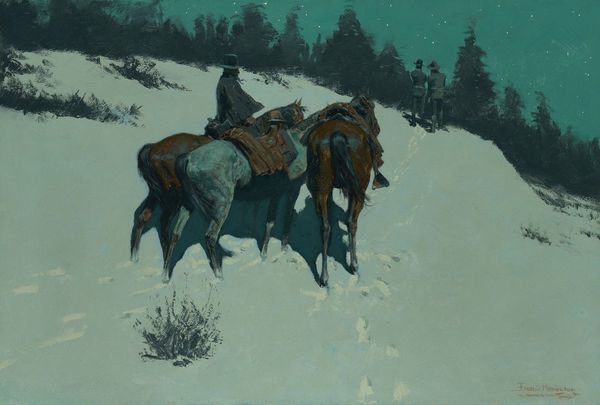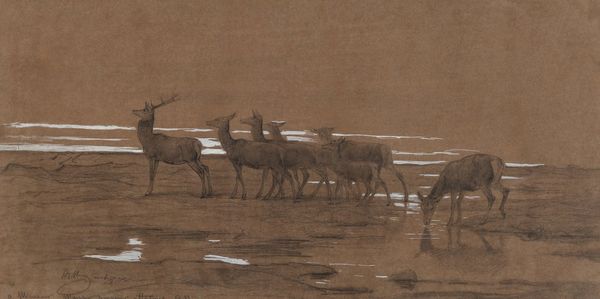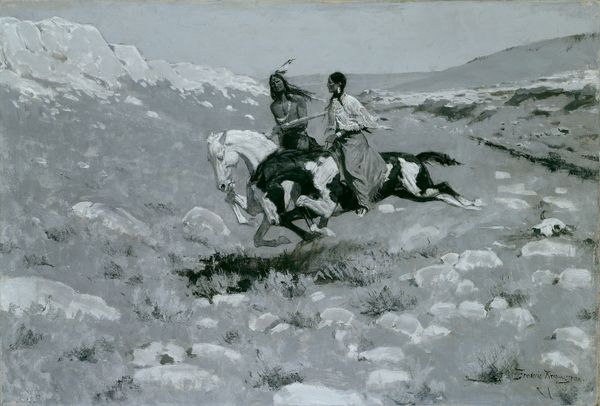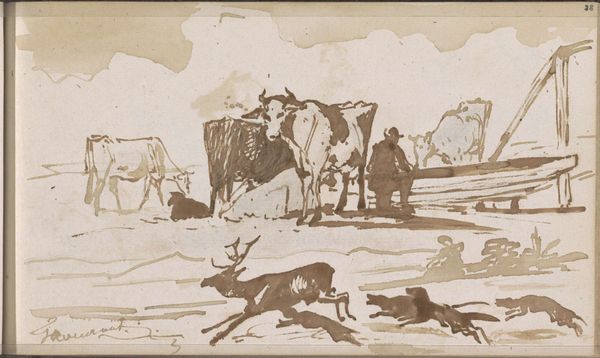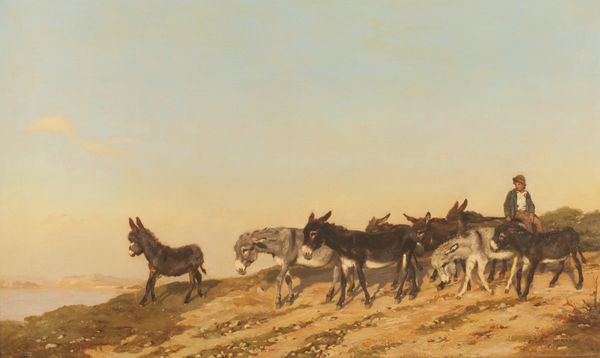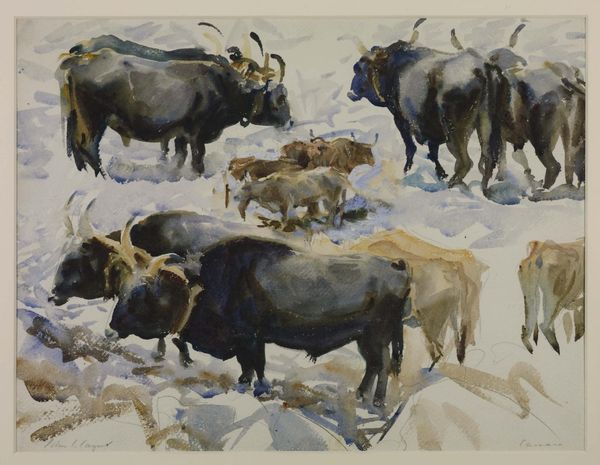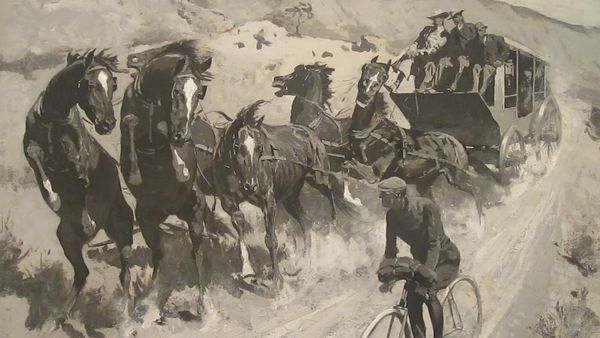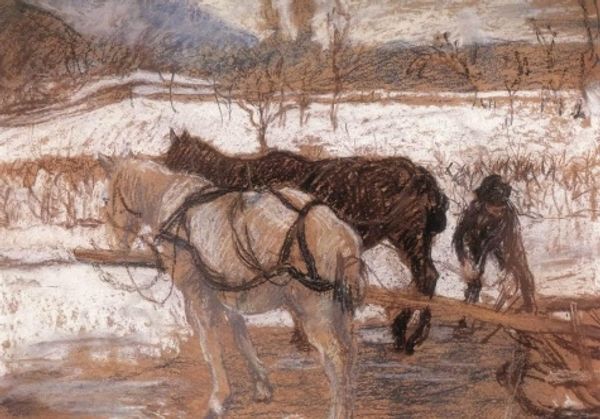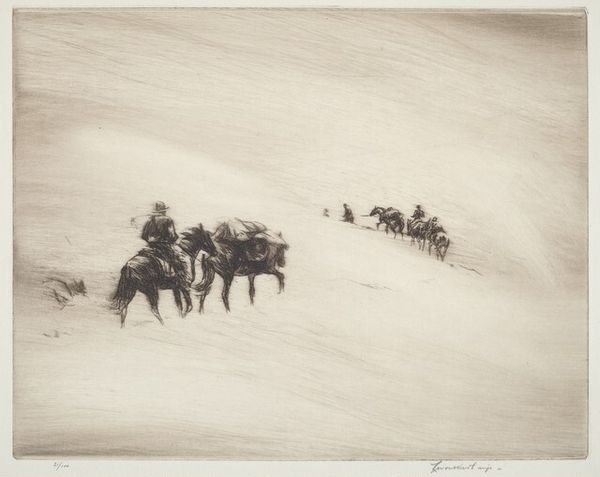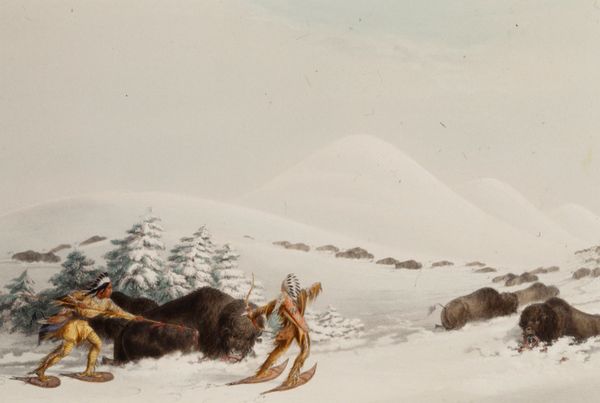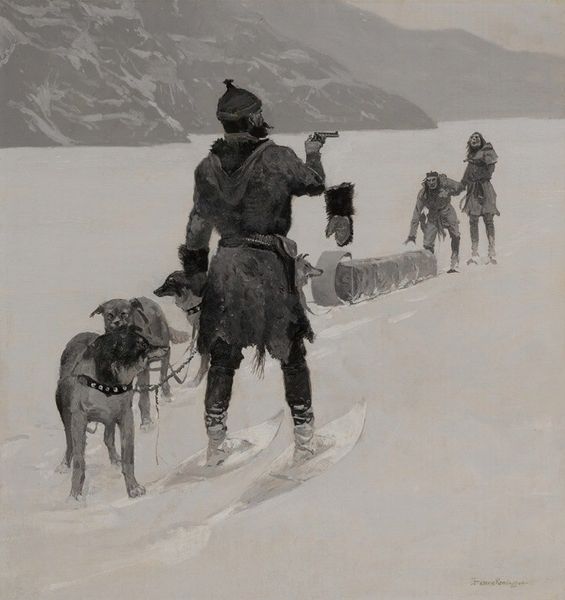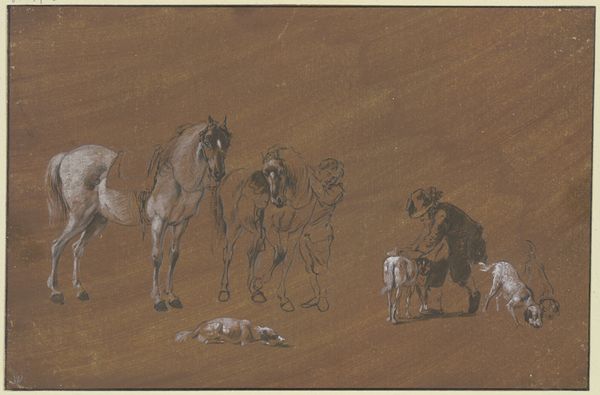
Copyright: Public Domain: Artvee
Curator: Let’s spend a few moments with Frederic Remington's "The Mule Pack," an oil painting from 1901. What strikes you first about this piece? Editor: It’s stark, almost monochrome. The hard black outlines against the relentless white—makes me feel cold, a visual shiver of the mountain's isolation. And yet there’s such rhythmic movement in the way the animals climb. It feels inevitable. Curator: Indeed. Remington often depicted the West through a lens of romanticized realism. This particular artwork can be seen as symbolic of American expansion, these animals laboriously carrying resources through harsh terrains. Remington really glorified conquest of the American West through imagery that also captured moments like this, work, labor, nature and struggle. Editor: I can see that, absolutely. But I'm also drawn to the mules themselves—the sweat, their effort and determination are almost tangible. They’re not just beasts of burden, but survivors. It feels almost biblical, a sort of forced exodus across these icy badlands. The human riding at the end looks completely oblivious. Curator: His romantic visions were sometimes read and promoted as documentary. He focused heavily on the visual aesthetics rather than on fully addressing social implications of this conquest. However, as we consider how the American West was portrayed and, frankly, sold through images in the early 20th century, paintings such as these served to support certain myths of that period, ideas and beliefs about frontier life and national destiny. Editor: Well, reality is what we choose to believe. But, honestly, I see the indomitable spirit, but mostly just in the mules. The sheer struggle radiates from the canvas. It does also occur to me to wonder what stories these pack animals could tell of the cargo that they had to transport. Curator: The burden of progress, perhaps? Editor: Maybe. A beautiful burden, if that isn’t an oxymoron. Something deeply admirable about these animal workers. It does provoke much thought about all that's lost when a new reality gets laid over what was originally there. Curator: Precisely, and Remington's work leaves us pondering those very paradoxes and transformations, still sparking debate more than a century later. Editor: He certainly stirred up a blizzard of questions in my mind, no doubt. An incredible painting.
Comments
No comments
Be the first to comment and join the conversation on the ultimate creative platform.
